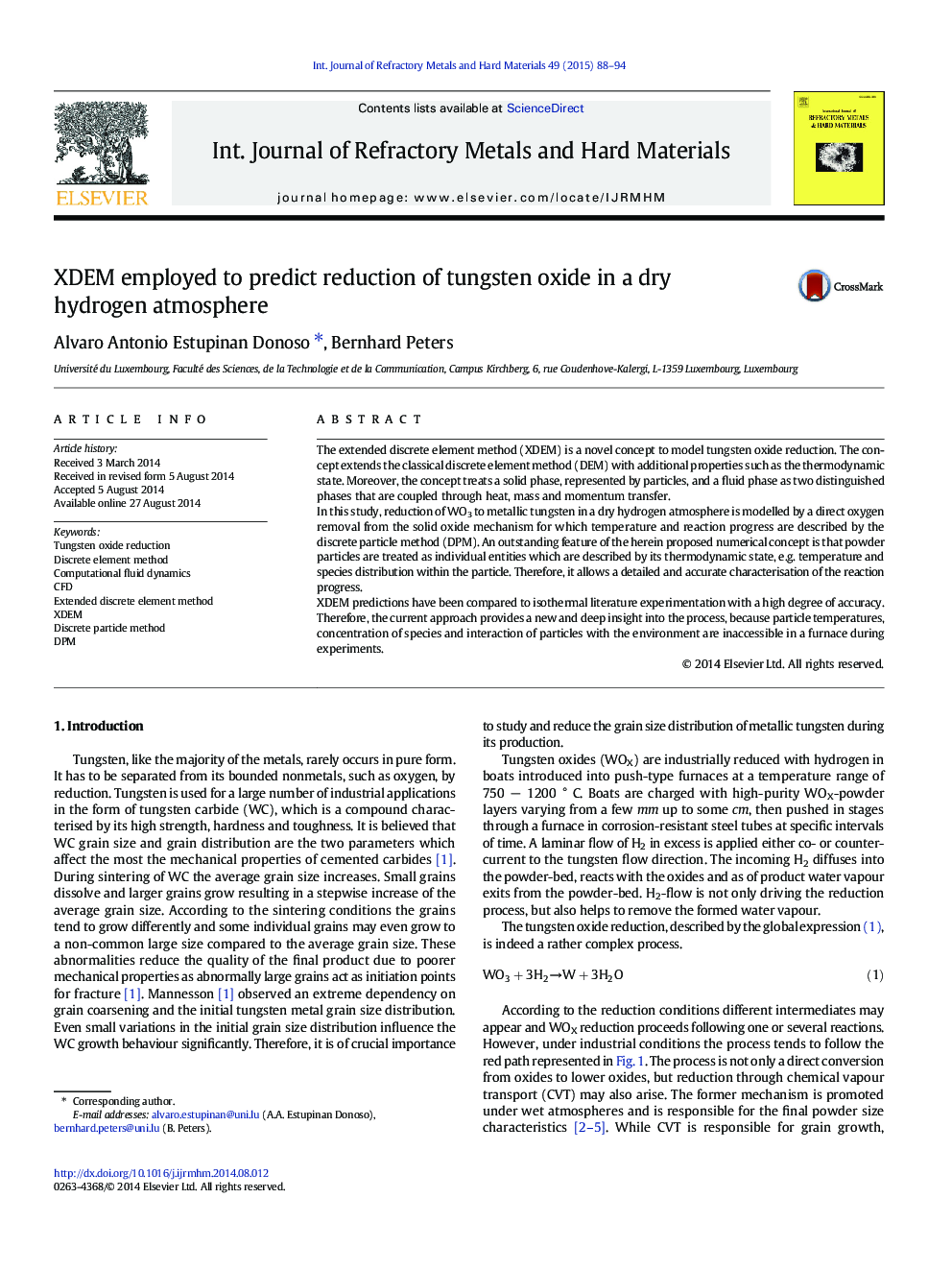| Article ID | Journal | Published Year | Pages | File Type |
|---|---|---|---|---|
| 1602992 | International Journal of Refractory Metals and Hard Materials | 2015 | 7 Pages |
•XDEM was presented as a novel concept to model tungsten-oxides reduction.•The concept was validated for the direct-reduction of WO3 to W using dry-H2.•The validation is presented as a first step towards industrial reduction of W-oxides.•Predictions include major properties e.g. temperature and species distribution inside particles.
The extended discrete element method (XDEM) is a novel concept to model tungsten oxide reduction. The concept extends the classical discrete element method (DEM) with additional properties such as the thermodynamic state. Moreover, the concept treats a solid phase, represented by particles, and a fluid phase as two distinguished phases that are coupled through heat, mass and momentum transfer.In this study, reduction of WO3 to metallic tungsten in a dry hydrogen atmosphere is modelled by a direct oxygen removal from the solid oxide mechanism for which temperature and reaction progress are described by the discrete particle method (DPM). An outstanding feature of the herein proposed numerical concept is that powder particles are treated as individual entities which are described by its thermodynamic state, e.g. temperature and species distribution within the particle. Therefore, it allows a detailed and accurate characterisation of the reaction progress.XDEM predictions have been compared to isothermal literature experimentation with a high degree of accuracy. Therefore, the current approach provides a new and deep insight into the process, because particle temperatures, concentration of species and interaction of particles with the environment are inaccessible in a furnace during experiments.
